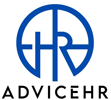It can be difficult to find a PEO. There are many tangible and non-tangible factors to consider. My goal is to give you a non-biased tool that will help you make a better decision about who you partner with. PEOs are not created equal. You’ll find a great deal of variety in the way PEOs structure, deliver and price their services. Hyundai and Mercedes are both cars. Both will transport you, but with a different experience. What you value depicts what you buy and the same goes for HR partners.
Figure out what the organization needs:
Let’s say your business is hiring remote employees multi-state and needs help in measuring performance. You’d make nationally competitive plans and good performance management technology a top priority of want-to-haves. You’ll also want to understand what HR expertise is offered around performance.
You Know What You Want, Now Narrow Your Options Down to Two or Three PEO’s:
1. Understand Pricing: Many variables affect the cost of joining a PEO. Your company’s size, overall workers’ compensation risk and the employee benefits offered to employees are all examples of components that contribute to cost. In addition, there can be differences in the way PEOs’ bill for their services. Some PEOs calculate their fee as a percentage of your payroll. Others charge a flat fee per employee. With the payroll percentage fee structure, bonuses and commissions you award, your employees may cause fluctuations in cost, meaning you may pay more to the PEO in those weeks. With the flat, per-head fee structure, it doesn’t matter if an employee makes $30,000 or $1,000,000–your PEO costs stay the same.
2. Long-Term Costs: How does the PEO manage health care and administrative costs long-term? Asking for their local average annual increase for medical only in writing. A difference as low as 2-3% medical increase between either PEO could mean thousands of dollars. An inexpensive PEO year one could be more expensive than a premier player in year two. Publicly traded PEOs display this as public record, however ensure that you’re looking at medical only, not a number combined with workers’ comp, or other insurances. With administrative costs, some PEOs increase yearly, some don’t.
3. Look at Your Evaluation from an Overall Perspective: Although cost is always a factor, picking the wrong provider could lead to other expenses elsewhere. Do you plan on building an HR department in-house? If so, you likely won’t need a PEO with a robust HR offering. If you don’t have an HR person right now and don’t plan on getting one, but end up paying $20,000 per year in employment attorney fees for HR related items, that isn’t cost conscious.
4. Meet the Service Team: Although the PEO sales rep might be very knowledgeable, chances are he/she will not be your main point of contact. Meet the people you would be working with and find out things like:
Are they reactive or proactive with updating laws and regulations, handbooks, HR best practices, etc? How much work do they do? Some PEOs will create custom job descriptions and present it to the client, while others only give templates and want you to customize them. Some will come on-site for employee issues, some won’t.
What are the options for communication? PEOs handle client interactions through self-service portals, call centers, or dedicated teams.
What are their credentials? American Payroll Association (APA) has two levels of certification. The Fundamental Payroll Certification (FPC) and the Certified Payroll Professional (CPP). HR Certification Institute (HRCI) has six certifications that show experience and HR acumen. The most common are the Professional in Human Resources (PHR) and Senior Professional in Human Resources (SPHR) certifications. To gain these credentials, HR professionals must meet certain experience and education eligibility requirements, pass a comprehensive exam and get re-certified every three years.
What is the staff-to-client ratio? The staff support ratio is the number of the PEO’s service team members to the total number of their client companies’ employees. This gives an idea of the level of service between PEOs. A PEO that provides one service team member for every 1000 client employees may be slower to respond to your requests than a PEO that provides one service team member for every 100 client employees. Think of it like a hotel star rating.
How does the HR team get paid/ranked? Compensation and rewards drive behavior. Some PEOs’ compensate based on customer retention, responsiveness, etc. Some just get a straight salary.
How long have they been employed there? Nothing is more frustrating than replacing a great account manager with a lousy one. If every HR person on the call has a low tenure with the PEO, could be a red flag when an HR company is having turn over.
5. Customer Satisfaction: Be sure to ask for a few customer referrals of similar companies in size and industry with specific questions. What do they like and dislike about the PEO? How long are they staying with them and why? What was their average annual medical increase looked like?
6. Companies Reputation: Almost everyone says they’re known for their service. Therefore, ask questions specific about the team. Strategically speaking, if an organization doesn’t have success in an area you’re looking to grow in, they can’t help you.
For example, if increasing employee morale and satisfaction is important to you, how well do they operate in that area? What awards have they received? Third-party awards like Best Places to Work by LinkedIn, Glass Door, Stevie Awards, are good references.
7. EPLI/Risk: Do you carry employment practices liability insurance? What coverage would my company gain or does the policy only cover the PEO? Some EPLI policies are what I call “conditional insurance”. Meaning the PEO extends coverage to the client, provided they followed their recommendations for managing an HR situation. Some PEOs write the policy in both the client and the PEOs name, so whether the client stuck with the HR team’s recommendation or not, the client has coverage. How much ownership interest will the PEO have when an employee lawsuit is pending?
Who should be involved?
I recommend having at least two people on the project because there are a lot of moving parts. People filter information based on their experience so ideally team up two people from different departments. Important details fall through the cracks when one person filters information and parlays details back to the team.
Also involve a trusted business advisor like a strategic financial consultant, your health insurance broker, or an HR consultant.
Finding a PEO can be difficult, I hope this tutorial makes your journey a little bit easier.




